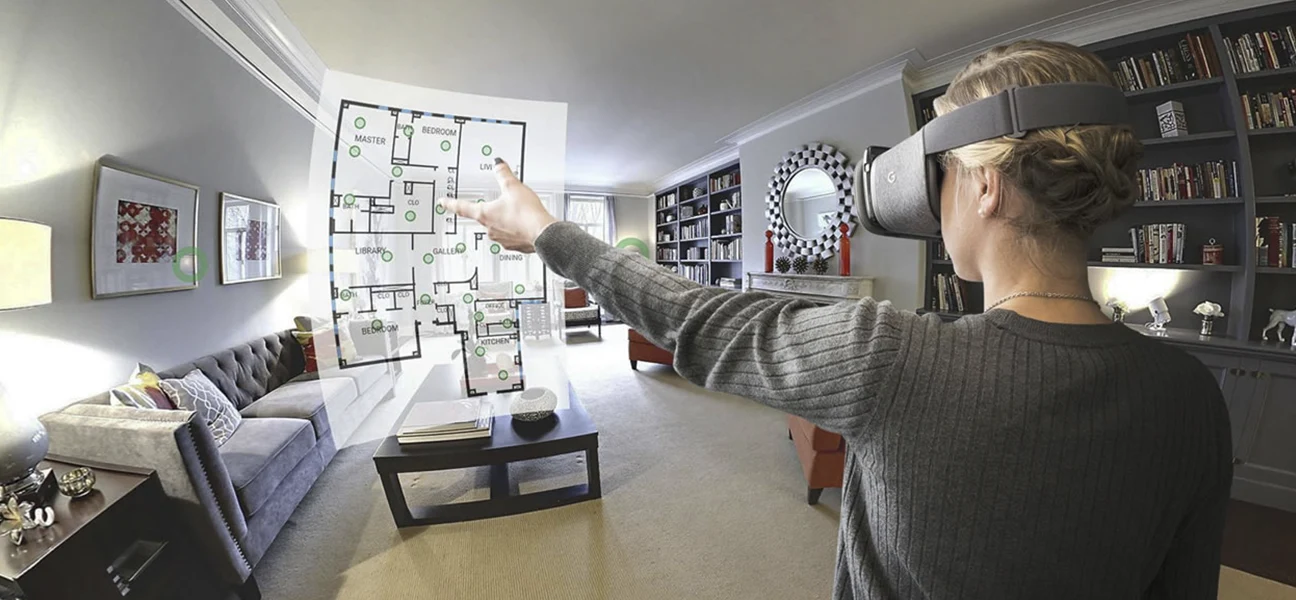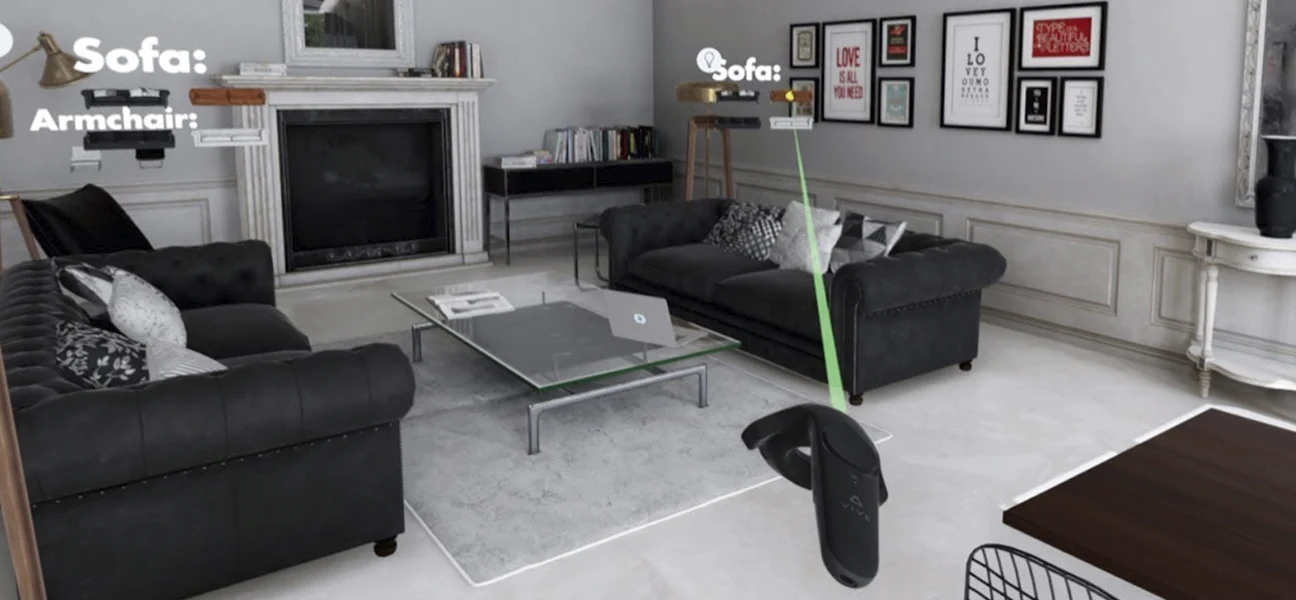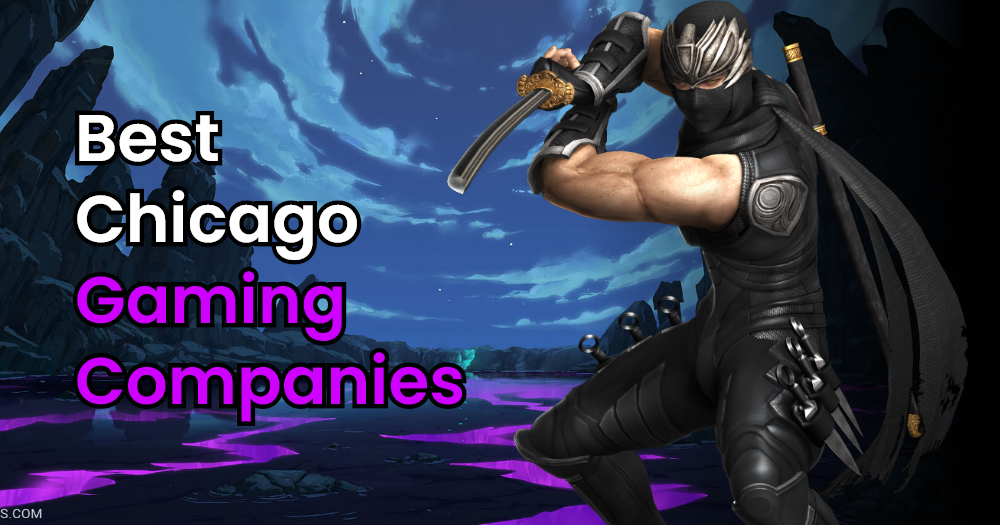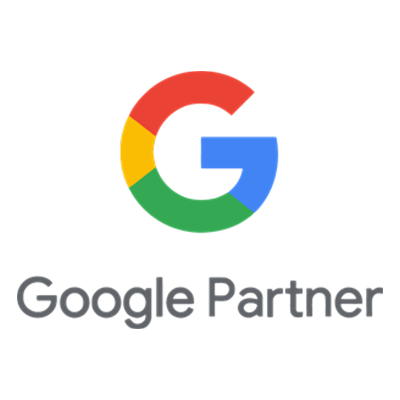AR/VR for Interior Design
Looking to redesign your interior space but having trouble visualizing the end result? Our AR/VR for interior design service can help experience new space before it’s even built. We provide 3D renderings and walkthroughs of your design, allowing you to see every detail and make changes before any construction begins. Say goodbye to the guesswork and hello to the perfect space, tailored to your unique style and needs.
VR/AR for Interior Design Solutions
Virtual and Augmented Reality (VR/AR) technologies are increasingly being used in the field of interior design to provide clients with immersive experience of their future spaces. These solutions allow designers to create 3D models and walk clients through virtual spaces, allowing them to visualize and make informed decisions about design choices.
VR / AR Stores
Interior designer can showcase their work in virtual showrooms and customers can visualize their space with customized decor and layouts, all without leaving the comfort of their homes.
Interior Architecture Planning
With VR/AR, designers can create and modify their designs in real time. Clients can see the designs in 3D and make informed decisions about the layout and aesthetics of their space.
Interior Design Visualization
Designers can create 3D models using third-party or custom-designed virtual models – 3D models of appliances, furniture, and other items, ensuring that the final result matches their vision.
Educate Interior Architects
AR and VR software can be utilized to enhance learning and training processes for interior architects and interact with complex design concepts in a virtual environment.
Why Choose Augmented Reality / Virtual Reality for Interior Design?
Augmented Reality (AR) and Virtual Reality (VR) has revolutionized various industries, including the interior design industry. AR and VR technology enables interior designers to provide immersive experiences to their clients, giving them a clear understanding of how their living space and floor plan would look like, even before they commit to purchasing furniture or home decor.
Better Visualization
With AR, designers can overlay digital images onto the real world, allowing clients to visualize furniture or decor items in their actual space whereas VR, on the other hand, creates virtual elements where clients can walk through the interior design concept, experiencing the space as if it were real.
Improved Collaboration
AR and VR technology make it easy for designers and architects to collaborate with clients, contractors, and other professionals. Designers can share their concepts with their clients, receive feedback, and make necessary changes before the actual work begins.

Enhanced Customer Experience
The utilization of AR and VR technology improves the customer experience by providing clients with an effortless way to envision design concepts. Clients can see the design in 3D, walk through the space, and make changes, ensuring that the final design meets their expectations.
Marketing Advantage
Clients are more likely to choose designers who offer AR and VR technology as it provides a more immersive and interactive experience. Designers can also showcase their work to potential clients, providing them with a clear understanding of their design capabilities.
Features of VR/AR for Interior Design Applications
The features of VR/AR for interior design applications are varied and powerful, enabling designers to visualize, create, and modify design concepts with ease. Augmented Reality in interior design can be used to showcase virtual furniture in real environments. By leveraging these technologies, augmented reality and virtual reality applications are incredibly useful in the plan approval process and better project delivery.
AR Ruler
Measure room dimensions of a room with mobile devices for accurate space planning.
3D Model Modification
Create, manipulate, and customize virtual 3D models of furniture, fixtures, and decor in real-time.
Virtual Lighting
Experiment with lighting settings to visualize the effects on space and decor.
Augmented Design Templates
Pre-designed templates help architects and designers envision a range of interior layout options for inspiration.
In-App Snapshots & Social Sharing
Take screenshots of designs and share them on social media platforms for collaboration and feedback.
Technology We Use For Augmented or Virtual Reality Interior Design Apps Development
The development of augmented or virtual reality interior design apps requires the use of diverse and constantly evolving technologies like computer vision, 3D modeling, and mobile computing to create immersive view and realistic environments for users.
Maya
Autodesk 3DS Max
Substance Painter
Adobe Photoshop
Augmented Reality
ARCore
Unity
Amazon Sumerian
Vuforia
Oculus Quest 2
HTC Vive Cosmos
Valve Index
Microsoft.Net
Java
Python
NodeJS
PHP
GO
Amezon S3
Azure Blob Storage
Google Cloud Storage
ZeroThreat
Why Hire AR/VR Developers for Interior Design App Development?
Looking for VR app development company to design interior app? Our skilled professionals possess the expertise to incorporate virtual reality (VR) technologies into interior design applications, where users can virtually explore various design options, experiment with furniture arrangements, and visualize real-scale models of their desired interiors. Our AR developers bring their proficiency in coding, 3D modeling, and user interface design to the project.
ISO 9001 CERTIFIED NASSCOM & STPI ACCREDITATION
-
375+
App Launched
-
17+
Years of Experience
-
150+
Dedicated App Developers
-
92%
Client Retention
Awards & Recognitions
We delight ourselves in the awards conferred based on the highest levels of customer satsiafction and ratings from real users.
READY TO SHIFT TO AUTOMATION
Be the First To Introduce Future
Partner with the best virtual reality app development company digitize your business

Trusted by Change makers
We are the go-to digital transformation business for companies that want to make a difference in their sector. Our goal is to achieve the complete satisfaction of our clients by providing them more sales and sustainable solutions. As an offshore VR app development company, clients worldwide trusted us with their AR projects.
Success Story of VR AR Architecture App Services
Frequently Asked Questions
Stated FAQs will help you to understand more about our functioning
Virtual Reality (VR) and Augmented Reality (AR) have revolutionized the field of interior design, offering innovative ways to visualize and experience spaces before they are built or renovated. Here’s how VR/AR is used in interior design:
- Immersive Visualization: VR enables designers to experience a virtual representation of a space, allowing them to navigate and interact with it in a highly realistic manner. This immersive experience provides a better understanding of the spatial layout, proportions, lighting, and overall ambiance of a room or building.
- Design Concept Exploration: Designers can use VR/AR to explore and iterate on various design concepts more efficiently. They can virtually test different furniture arrangements, color schemes, materials, and finishes, helping them make informed decisions about the aesthetics and functionality of a space.
- Virtual Showrooms: AR can transform physical showrooms into virtual ones, enhancing the shopping experience for customers. Using mobile devices or AR glasses, customers can visualize how different furniture pieces, decor items, or paint colors would look in their own homes. This technology enables them to make more confident purchasing decisions.
- Space Planning and Layout: VR/AR allows designers to create accurate 3D models of a space and experiment with different layouts. They can easily move walls, change room sizes, or rearrange furniture virtually, helping them optimize the use of available space and achieve better functionality.
- Material and Texture Visualization: VR/AR can simulate different materials, textures, and finishes, giving designers and clients a realistic preview of how they would look in the actual space. This capability helps in selecting appropriate materials and ensures cohesive design elements throughout the interior.
- Architectural Integration: VR/AR can integrate architectural elements within interior design. Designers can overlay virtual architectural features like windows, doors, or structural details onto existing spaces, helping clients visualize how the design interacts with the surrounding architecture.
- Collaborative Design Process: VR/AR facilitates collaborative design processes, enabling designers, clients, and other stakeholders to remotely view and interact with the same virtual environment. This enhances communication, reduces misunderstandings, and promotes better decision-making throughout the design and construction phases.
- Accessibility and Universal Design: VR/AR can assist in designing spaces that are accessible to people with disabilities. By simulating different accessibility scenarios, designers can identify and address potential barriers, ensuring inclusive design principles are incorporated from the beginning.
Here are some key advantages of using AR in interior design:
- Real-time Visualization: AR allows designers and clients to view virtual elements seamlessly blended with the real world in real time. Designers can overlay virtual furniture, decor items, or architectural features onto the physical space, providing an immediate and accurate visualization of how the design will look in reality.
- Enhanced Spatial Understanding: AR enables users to perceive the scale, proportion, and spatial relationships of objects within a room. By placing virtual objects within the physical environment, AR helps clients and designers better understand how different elements will fit and interact in a given space, avoiding potential design issues.
- Interactive Design Experience: AR provides an interactive and engaging design experience. Users can manipulate virtual objects, reposition furniture, change colors or finishes, and experiment with different design options in real time. This interactivity fosters a sense of ownership and empowerment, allowing clients to actively participate in the design process.
- Cost and Time Savings: AR reduces the need for physical prototypes or samples, saving time and costs associated with traditional design iterations. Instead of physically purchasing or creating multiple variations of furniture or finishes, designers can virtually present different options through AR, streamlining the decision-making process and minimizing expenses.
- Design Customization: AR allows for on-the-fly customization of designs. Clients can visualize and personalize their space by trying out different configurations, styles, and finishes instantly. This customization empowers clients to make informed design choices that align with their preferences, resulting in highly tailored and satisfying outcomes.
- Remote Collaboration: AR facilitates remote collaboration among designers, clients, and other stakeholders. By sharing an AR environment, participants can view and interact with the same virtual design elements, regardless of their physical location. This capability promotes seamless communication, eliminates geographical barriers, and expedites the design review and approval process.
- Error Prevention: AR helps identify design errors or inconsistencies early in the process. Designers can overlay virtual elements onto the physical space, ensuring proper alignment, accurate measurements, and adequate clearances. By catching potential issues in the virtual stage, costly mistakes during construction or installation can be avoided.
- Customer Engagement: AR enhances customer engagement and satisfaction. Clients can visualize and experience the proposed design before it’s implemented, reducing uncertainty and increasing confidence in the final outcome. This immersive and interactive experience fosters a stronger emotional connection to the design, leading to greater client satisfaction and a higher likelihood of successful project outcomes.
- AR in Interior Design: AR overlays virtual elements onto the real world, enhancing the perception and understanding of physical spaces. In interior design, AR can be used to superimpose virtual furniture, decor items, or architectural features onto the actual environment. This technology enables designers and clients to see how different design elements would look and fit within a room in real time. By using AR, users can interact with virtual objects, move them around, change their attributes, and customize the design to align with their preferences. AR provides an interactive and dynamic design experience, allowing users to visualize and evaluate design options directly within their existing physical space.
- VR in Interior Design: VR, on the other hand, creates a fully immersive virtual environment that users can navigate and interact with. In interior design, VR technology allows designers and clients to step into a virtual representation of a room or building. By wearing a VR headset, users are transported to a computer-generated 3D environment that simulates the look and feel of a physical space. They can explore the space from various angles, move through rooms, and interact with virtual objects. VR provides a highly realistic and detailed visualization of a design, including aspects such as lighting, textures, and spatial proportions. This immersive experience helps designers and clients gain a deeper understanding of the design concept, enabling them to make more informed decisions regarding aesthetics, functionality, and layout.
- Both AR and VR technologies have significantly impacted interior design by offering designers and clients novel ways to envision and evaluate design concepts.
Interior designers utilize Virtual Reality (VR) in various ways to enhance their design processes and improve client experiences.
- Immersive Design Visualization: Virtual Reality allows interior designers to create realistic, immersive 3D environments that clients can explore virtually. By wearing a VR headset, clients can step into a virtual representation of their future space, experiencing its scale, proportions, and ambiance in a highly realistic manner.
- Space Planning and Layout Optimization: Virtual Reality enables interior designers to create accurate 3D models of spaces and experiment with different layouts. Designers can virtually move walls, change room configurations, and rearrange furniture to optimize the use of space. This helps in identifying potential design challenges, refining layouts, and ensuring better functionality before any physical modifications take place.
- Material and Finishes Selection: VR technology allows interior designers to showcase a wide range of materials, finishes, and textures virtually. Clients can see how different flooring, wall coverings, fabrics, or finishes will look in their space, providing them with a realistic preview. This helps in making informed decisions about the selection of materials and achieving cohesive design aesthetics.
- Lighting Simulation: Virtual Reality can simulate different lighting scenarios, enabling designers to showcase the impact of natural and artificial lighting on the space. By adjusting lighting parameters, such as intensity, color temperature, or direction, designers can demonstrate how lighting choices will influence the ambiance and mood of the room. This helps clients visualize the effects of lighting design and make well-informed lighting decisions.
- Client Collaboration and Feedback: Virtual Reality fosters better collaboration between interior designers and clients. Designers can share virtual models with clients, allowing them to explore and provide feedback on the design. Clients can virtually “walk through” the space, visualize design options, and communicate their preferences and concerns in a more intuitive and immersive way. This collaborative approach ensures that the final design aligns with the client’s vision and requirements.
- Showcasing Design Proposals: Interior designers can use Virtual Reality to present their design proposals in a compelling and memorable way. By creating interactive VR presentations, designers can take clients on a virtual tour of the proposed design, highlighting key features and design elements. This immersive experience helps clients understand the design intent and fosters a deeper emotional connection to the space.
- Remote Design Reviews: Virtual Reality facilitates remote design reviews and presentations. Designers can share VR experiences with clients regardless of their physical location, enabling remote collaboration and eliminating the need for in-person meetings. This feature is particularly beneficial when working with clients in different geographical locations or when faced with travel limitations.
When it comes to Virtual Reality (VR) and Augmented Reality (AR) apps for interior design, there are several top VR/AR apps for interior design available that provide immersive and interactive experiences.
- Houzz: Houzz is a popular app that offers a vast library of interior design ideas, products, and professionals. It utilizes AR functionality, allowing users to virtually place furniture and decor items in their own space to visualize how they will look. Houzz also provides a platform for connecting with designers and discovering inspiration for interior design projects.
- IKEA Place: IKEA Place is an AR app specifically designed for furniture shopping and interior design. Users can browse through IKEA’s furniture catalog and virtually place items in their space using the app. This allows them to see how different furniture pieces fit and look before making a purchase decision.
- Planner 5D: Planner 5D is an intuitive interior design app that offers both 2D and 3D design capabilities. It allows users to create floor plans, design interiors, and furnish spaces with a wide range of virtual furniture, fixtures, and decor items. The app provides an immersive 3D mode for virtual walkthroughs of the designed spaces.
- Homestyler: Homestyler is an AR app that enables users to visualize and design interior spaces. Users can take a photo of their room and overlay virtual furniture, flooring, and decor items to see how different design elements will look in their space. Homestyler also offers a gallery of design ideas and allows users to connect with design professionals.
- Magicplan: Magicplan is an app that uses AR technology to create floor plans and room layouts. Users can capture measurements and dimensions of a space by simply walking around with their smartphone or tablet. The app then generates accurate floor plans that can be customized and furnished virtually.
- Amikasa: Amikasa is an AR app that specializes in room design and furniture visualization. Users can create and customize room layouts, add furniture from a wide selection of virtual models, and view the designed space in augmented reality. Amikasa allows users to experiment with different styles, colors, and arrangements to find the perfect design for their space.
- Roomle: Roomle is an app that combines AR and VR technologies to create immersive interior design experiences. Users can design and furnish rooms, explore their designs in virtual reality, and even purchase furniture and decor items directly through the app. Roomle offers advanced features for creating accurate floor plans and visualizing designs in 3D.


















